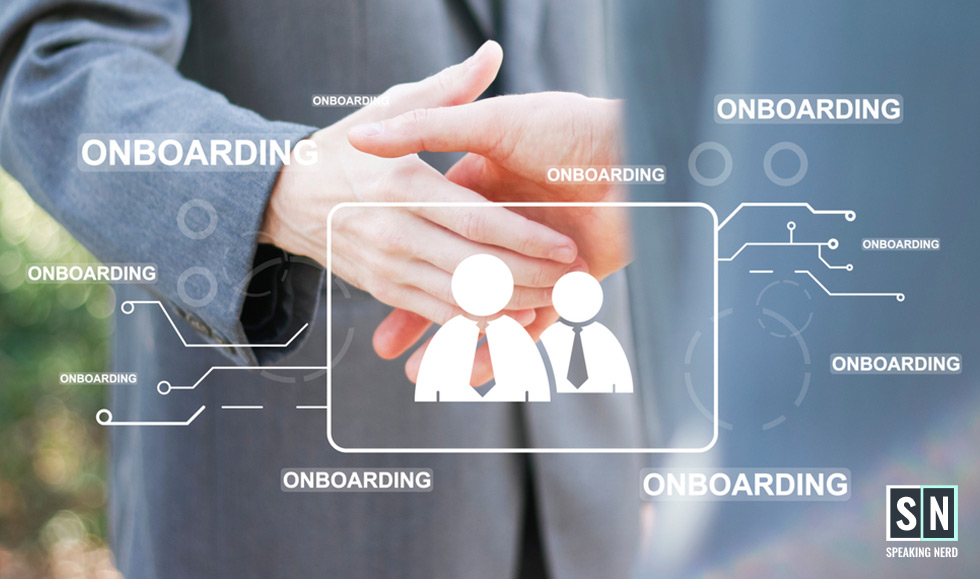Overview
Chatbots are programs designed to simulate human interaction through chats. They can help provide instructions to your employees or get information from them, enabling a smooth employee onboarding and employee training and development experience. Employee onboarding refers to procedures you follow when hiring a new employee. It includes getting their personal information, giving them access, and telling them about the company. Some employee onboarding processes may also include employee training and development. However, it is better to separate them as you may have to train more than once.
Table of Content
Employee training and development means instilling skills and knowledge necessary for functioning as a productive employee in that company. Therefore, a company's progress is an essential aspect that determines its growth.
You can get help from HR chatbots for both employee onboarding and employee training and development. As both these processes require communicating data, chatbots provide an appropriate channel. For example, you can program a chatbot to ask questions to collect data and give answers to queries from freshly appointed people; this can free the HR employees to focus on more pressing matters.
Problems during the employee onboarding process

You can understand HR chatbots' needs from employee onboarding and employee experience in an employee's onboard training and development challenges. Only HR personnel can ensure a positive process. However, the HR team may face the following challenges:
-
Lack of proper communication can make employee onboarding can long process.
-
Ensuring that the employees receive instructions regarding the documents they submit is time-consuming.
-
Explaining company policies in a relevant and personalized manner is also challenging.
Similarly, employees may also face challenges:
-
An incomplete instruction about the joining process may make the process cumbersome and lengthy.
-
The employee training and development sessions are usually general. Hence, the recruits may miss out on some information, making them clueless during the initial days.
-
It can be challenging for the employees to adjust to unfamiliar and new company policies.
-
Freshly appointed employees often have personal queries that the FAQ section may not satisfy.
How can chatbots help employees?
As technology advances, it's no surprise that HR chatbots have become a popular tool for employee training and development. These virtual assistants use artificial intelligence to provide personalized and convenient support to employees; this allows them to learn and grow in their roles at their own pace:
-
One of the key benefits of using HR chatbots for employee training is their ability to offer a wide range of modules and resources. From company policies and procedures to job-specific training and soft skills development, HR chatbots can cover a wide range of topics to meet the diverse needs of employees.
-
HR chatbots can also guide new employees through the employee onboarding process. Chatbots can help new hires get up to speed quickly and efficiently by providing a checklist of tasks and necessary information. Additionally, chatbots can answer questions and provide support as needed, making the employee onboarding process less intimidating for new employees.
-
Performance evaluation is another area where HR chatbots can be helpful. By gathering employee feedback on their training and onboarding experience, chatbots can help HR professionals identify areas for improvement and address any issues that may have arisen and cause hindrance in any type of human resource KPIs.
-
Recruits can access employee training and development modules and resources at any time and location, making it easy to fit learning and development into their busy schedules. This flexibility is significant in today's remote work environment, where many employees may not be able to attend in-person training sessions.
-
Another benefit of HR chatbots is their ability to provide personalized support. Chatbots can use artificial intelligence to assess an employee's needs and provide customized recommendations for employee training and development. This process helps to ensure that employees learn the skills and knowledge most relevant to their roles and career goals.
-
HR chatbots can also help improve retention and productivity by providing ongoing employee support. Whether an employee is struggling with a specific task or looking for guidance on advancing their career, chatbots can provide the support they need to succeed. This support can reduce turnover and increase the overall performance of the organization.
-
Finally, HR chatbots can provide ongoing employee support by answering questions and providing resources as needed. By integrating the chatbot with other HR systems and tools, companies can create a seamless experience for employees and ensure they can access the support they need to succeed in their roles.
Types of chatbots
Scripted
During virtual onboarding, you can use scripted chatbots to ask the employees questions. These questions can help familiarize the employees with the company and its work environment; the scripted chatbots also efficiently collect information from the recruits, such as college degrees, driver's licenses, etc.
Unscripted Chatbots
The unscripted chatbots are similar to a search engine but in a chat format. Your employees can ask various questions during the virtual onboarding about the company, rules, payment, vacation, etc., without feeling anxious or embarrassed.
Limitations of Chatbots
Chatbots may have several benefits, including HR automation, onboarding and training; however, they may only be suitable for specific tasks or industries. Some people or employees in certain industries need a human touch. Therefore, you can't completely replace a human being with a chatbot.
Chatbot Best Practices
If you have decided to integrate chatbots into your onboarding and training processes, ensure the following:
-
Make sure that employees know they are talking to chatbots. Otherwise, they may feel deceived, especially if the matters are sensitive.
-
Initially, it is better to operate two channels simultaneously for virtual onboarding and training: one using and one without using chatbots.
-
During the initial run, use the HR chatbots for only a single step in the process. That way, you can quickly identify and resolve any issues.
-
Don't try to rush while improving the chatbot functionality; add them one at a time. Simultaneously adding multiple functionalities can make it challenging while debugging.
-
Carefully think about the failures. For example, consider the appropriate response when your HR chatbot doesn't recognize a question. Should it send the employee to your website or connect to an HR professional?
-
Keep analyzing all the communications with the employees; this will tell you whether the chatbot is functioning as expected. However, ensure you tell employees that the transcripts are not private.
Conclusion
Overall, HR chatbots are valuable for employee training and development, offering convenience, personalization, and ongoing support to help employees learn and grow in their roles. As technology evolves, we will likely see even more innovative ways recruiters can use chatbots to support employee learning and development.


